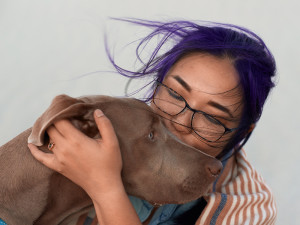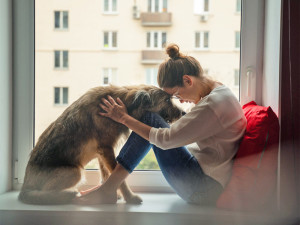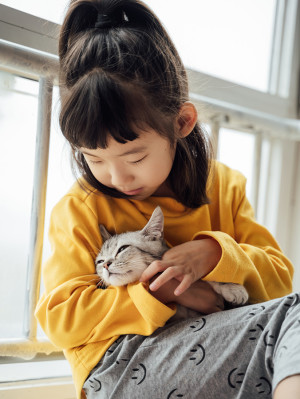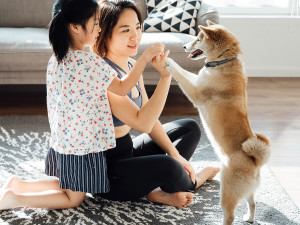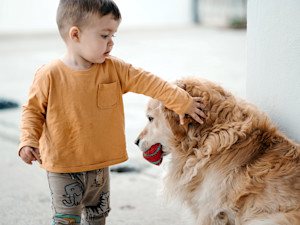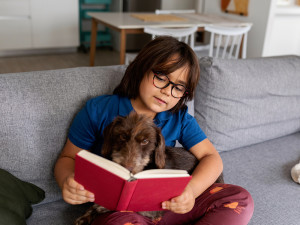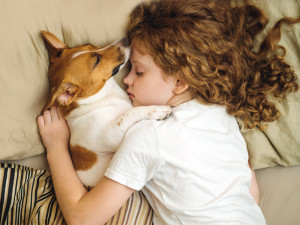Helping Your Child Deal With The Grief of Losing a Pet
When it’s time to say goodbye…
As pet parents, we know that our dogs and cats are more than just pets, they’re cherished members of our family who provide unconditional love and support through the bad times, and happiness and laughter through the good. Unfortunately, the joy of sharing your life with an animal comes hand-in-hand with the heartbreak of losing them – a heartbreak that is amplified when they’re also your child’s best friend.
Pets offer a special kind of comfort, friendship, support and security for children, so when a child experiences the death of the pet they would usually rely on for companionship when sad, their absence will be felt even more keenly. So, although it goes without saying, it’s important to be supportive and understanding as they grieve the loss of their pet. Here are some ways to do so.
Get (totally free) deals for food, treats, accessories, tech and way more pet parenting must-haves.
How children express grief
No matter how you look at it, grief is hard. There is no right or wrong way to deal with it, nor is there a right or wrong way to help your child cope, but there are some ways you can help them process. “The death of a pet might be your child’s first time losing a loved one,” explains child psychologist Zahir Patel, who has 12 years’ experience in the field and works for the NHS Paediatric Psychology Service in Leicester. “So while it will be a very difficult time, the grieving process is also an opportunity for growth and can help children learn how to cope with other losses throughout life.”
Zahir explains that it’s important to resist your natural urge to protect your child from the pain, and instead you should focus on acknowledging their feelings of loss and sadness. He suggests starting by explaining your own sadness and sharing your emotions. “If your emotion isn’t obvious, this may confuse your child – it’s OK to let them see you cry,” he says. This can help your child understand that adults have these feelings, too, and that it’s a natural part of life. “You may also want to share what you do personally to cope with your difficult emotions – it will be comforting to your child to know that they’re not alone in feeling sad,” says Zahir.
Keep in mind, though, that not all children express their grief through sadness. Anger, frustration and guilt are also common manifestations of grief for both children and adults. Understanding this is important so you can help them learn to work through it. “Validate your child’s feelings by explaining that it’s normal to feel all of those emotions and it’s OK to not want to talk about them at first, and that you’re there when they are ready to talk,” says Zahir. Remember that grieving takes time, and every child grieves differently so you’ll need to be patient and understanding as they navigate their grief and adjust to life without their pet.
“Grief-related emotions can come and go, sometimes without warning. It may take longer than you thought for your child to get through this period,” says Zahir, who advises that there are some signs which may indicate your child needs some extra help to cope. These can include depression, anxiety, sleep disturbances, difficulty functioning at home or school months after the pet’s death, preoccupation with thoughts about the deceased pet or other behaviours that could be seen as ‘acting out’. If any of these persist, Zahir recommends reaching out to your GP.
Preparing your child for the death of a pet
If your dog or cat is unwell or old, you can start to prepare your child for what will happen next, which can also prevent the death from coming as a shock. “It might be tempting to hide how serious the situation is if your pet is terminally ill, or to tell your child that everything is fine,” says Zahir. “Instead, talk to your child in an age-appropriate way about what’s going on.” He emphasises that during this time, you should create space for questions and reassurance as your child starts to process their emotions and prepares to say goodbye.
If you have to put your pet to sleep, Zahir says that it’s OK to explain what will actually happen, such as saying, ‘The vet will give our pet an injection that stops their heart from beating.’ “If you do have to euthanise your pet, be careful about saying the animal went ‘to sleep’ or ‘got put to sleep’,” says Zahir. “Young children might get confused about this terminology and worry that if they go to sleep at night, they might not wake up. So it’s always better to be clear, even if it feels hard to say the word ‘death’ to them.”
You may also want to explain that the vet has done everything that they can, your pet would never get better and this is the kindest way to take the pet’s pain away so they can die peacefully, without feeling hurt or scared. Many children will benefit from having a chance to say goodbye first, so if possible, consider arranging a special activity at home for your pet and child and explain that it’s time to say goodbye.
Sharing the news
One of the hardest parts about losing a pet can be breaking the news. Try to do this one-on-one in a place where they feel safe and comfortable and aren’t easily distracted, recommends Zahir. “As you would with any tough issue, base how much information you share on their age, maturity level and life experience,” says Zahir.
If the pet’s death is more sudden, calmly explain what has happened and be prepared for questions. “Children may ask about death more generally and what happens after we die,” says Zahir. How you answer these questions is completely up to you based on your own beliefs, and admitting you don’t know and explaining that death is a mystery is also an acceptable answer. But Zahir recommends not glossing over the event by telling a lie such as saying the dog ran away, went on a trip, or using the old classic that they ‘went to live on a farm’. It probably won’t ease their sadness either way and if they learn the truth later on it can lead to feelings of anger.
Help them remember their pet in a special way
There are many ways to celebrate and remember a pet who has died, which can help your child process the fact they’re no longer there. You could suggest that your child draw a picture of your pet that you can put on the fridge to remember them by, or use a memory bookopens in new tab. You could also create a memory box or scrapbook of photos together. Planting a tree or having a little memorial service where your family can share happy and funny memories about your pet can help, too, and will give your child the chance to say goodbye if they weren’t able to.
Moving on
After the shock of the news fades, it’s important to help children heal and move on. “It’s a good idea to keep talking about your pet even after they’ve gone,” says Zahir. When the time is right, you might consider adopting a new pet – not as a replacement, but as a way to welcome another animal friend into your family. Getting a new pet is a big decision and it may help lessen your family’s grief but if you do go down this route, Zahir recommends waiting a while so your child has really had time to process the death, as you should never bring a new animal into the family as a coping mechanism. “Children may expect that a new pet will be exactly like the last one and be disappointed when they aren’t, so it’s really important not to do this too soon,” says Zahir. “Children may also get the wrong message that loved ones who have passed on are replaceable.”
Recommended reading for children on losing a pet
There are lots of great books available to help children of all ages deal with the grief associated with the loss of a pet.
Toddlers
Bear Islandopens in new tab by Matthew Cordell
The Goodbye Bookopens in new tab by Todd Parr
Ages 3–6
The Forever Dogopens in new tab by Bill Cochran
Lovely Old Rolyopens in new tab by Michael Rosen
Goodbye, Breckenopens in new tab by David Lupton
I’ll Always Love Youopens in new tab by Hans Wilhelm
Goodbye Mogopens in new tab by Judith Kerr
The Invisible Leashopens in new tab by Patrice Karst
Ages 7–11
The Tenth Good Thing About Barneyopens in new tab by Judith Viorst
Kate, the Ghost Dog: Coping With the Death of a Petopens in new tab by Wayne L Wilson
Love That Dog: A Novelopens in new tab by Sharon Creech
Teens
The Book of Pet Love and Lossopens in new tab by Sara Bader
Losing My Best Friendopens in new tab by Jeannie Wycherley
Soul Comfort for Cat Loversopens in new tab By Liz Eastwood
If you need more advice, the Blue Cross has a dedicated pet loss sectionopens in new tab on how your child might react to the loss of a pet, tips to support them through it and how to say goodbye.


